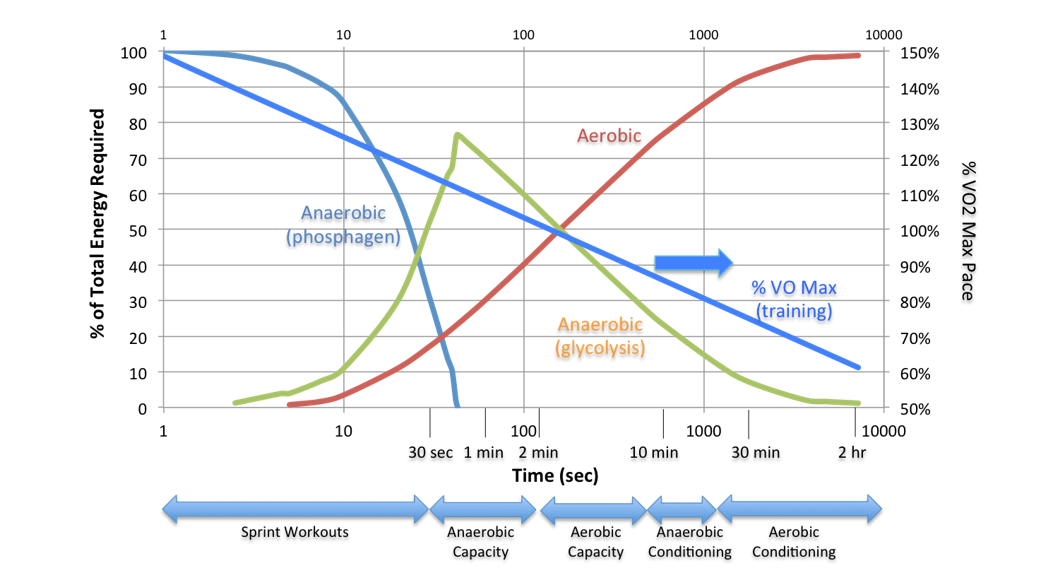Nutrition and physical activity go hand in hand. Activity demands carbohydrate and fat as fuel, protein to build and maintain lean tissues, vitamins and minerals to support both energy metabolism and tissue building, and water to help distribute the fuels and to dissipate the resulting heat and wastes.
The Physical Activity Energy Systems
The energy that drives every function of living cells is provided by ATP (Adenosine triphosphate). All bodily tissues constantly contain trace amounts of ATP, and it has the ability to rapidly deliver energy. It’s possible that muscle cells require more ATP to power their many functions. Heat is produced and muscles are contracted when an ATP molecule splits in the muscle cells. So, ATP is used during physical activity.
During various forms of physical activity, muscle cells can renew ATP thanks to three main energy systems:
● the lactic acid system (anaerobic glycolysis)
● the phosphagen system (also known as the creatine phosphate system)
● the aerobic system (aerobic glycolysis, fatty acid oxidation, and TCA cycle)
All three energy systems are always active, although one will always be predominant at any one time based on the level of exercise and the practitioner’s conditioning.
The Phosphagen System
Immediately after the onset of a demand, before muscle ATP pools dwindle, a muscle enzyme begins to break down another high-energy compound that is stored in the muscle, creatine phosphate (CP). CP is made from creatine, a compound commonly found in muscles, with a phosphate group attached. CP can split anaerobically (not requiring oxygen) to release phosphate, which can be used to replenish ATP. Supplies of CP in a muscle last for only about 10 seconds, producing enough quick energy, without oxygen, for a 100-meter dash. When activity ceases and the muscles are resting, ATP gives up one of its phosphate groups to creatine. Thus, CP is produced during rest by reversing the process that occurs during muscular activity.
The Lactic Acid System
After the first 10 seconds or so of intense activity, energy from the phosphagen system diminishes, so muscle cells call upon the lactic acid system to produce more ATP. The lactic acid system involves the anaerobic breakdown of glucose to pyruvate (and then of pyruvate to lactate). The primary source of glucose is muscle glycogen. This system can generate a small amount of ATP quickly for high-intensity activity lasting up to 3 minutes.
The Aerobic System
To meet the more prolonged demands of sustained activity, the muscles rely on the aerobic system to provide ATP for muscle contraction. Carbohydrate, fat, and some amino acids are continuously oxidized to ensure an uninterrupted supply of ATP. During rest, the body derives more than half of its ATP from the oxidation of fatty acids, most of the rest from the complete oxidation of glucose, and a small percentage from the oxidation of amino acids. During physical activity, the body adjusts its mixture of fuels. Muscles always use a mixture of fuels—never just one.
How much of which fuel the muscles use during physical activity depends on an interplay among the fuels available from the diet, the intensity and duration of the activity, and the degree to which the body is conditioned to perform that activity.
Oxygen or its lack thereof is critical to the the energy systems just described. The phosphagen and lactic acid systems are anaerobic (without oxygen). The aerobic system uses oxygen. Anaerobic activities are associated with strength, agility, and split-second surges of power. The jump of a jump kick, the power of a throw, and the use of a heavy weapon, all involve anaerobic work. Such high-intensity, short-duration activities depend mostly on glucose as the chief energy fuel in the lactic acid system. Endurance activities of low to moderate intensity and long duration depend more on fat to provide energy through the aerobic system. The ability to continue swimming to the shore, to keep on hiking to the top of the mountain, or to continue pedaling all the way home reflects aerobic capacity. As mentioned earlier, aerobic capacity is also crucial to maintaining a healthy heart and circulatory system. Because various physical activities use different energy systems and quantities of nutrients to various degrees, a person’s food choices can greatly influence performance.


